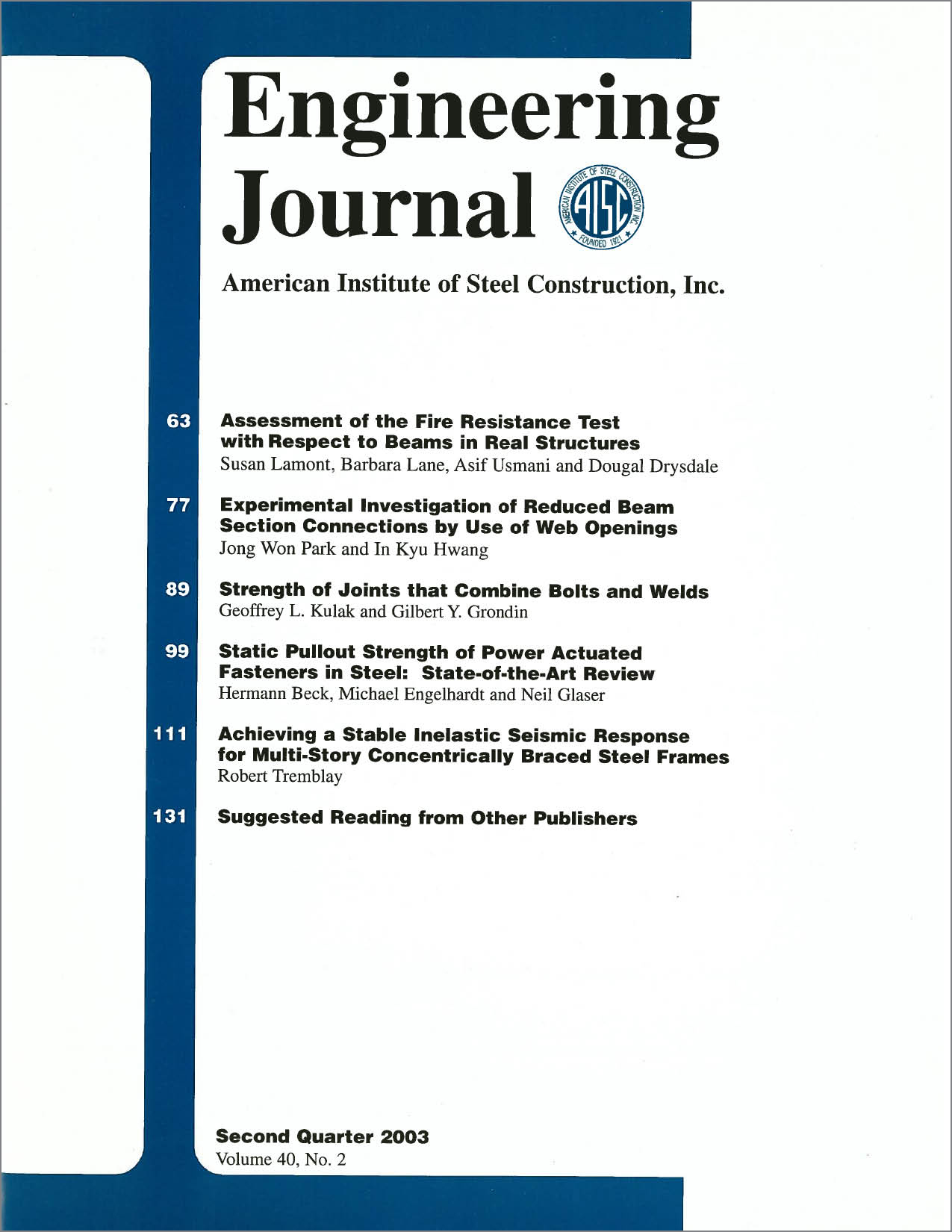Achieving a Stable Inelastic Seismic Response for Multi-Story Concentrically Braced Steel Frames
DOI:
https://doi.org/10.62913/engj.v40i2.802Abstract
Recent seismic design provisions (CSA, 2001; AISC, 2002) for concentrically braced steel frames (CBFs) aim at dissipating seismic input energy through inelastic deformations in the bracing members. These deformations include tension yielding of the braces as well as plastic hinge rotation that develops upon buckling of the braces in compression and subsequent straightening of the braces when pulled in tension in the next loading cycle. Over the years, researchers have gained a good understanding of the hysteretic response of steel braces (Jain, Goel, and Hanson, 1980; Popov and Black, 1981; Astaneh-Asl and Goel, 1984; Astaneh-Asl, Goel, and Hanson, 1985) and detailing requirements such as maximum b/t and KL/r ratios are now prescribed in codes to achieve ductile brace response. Capacity design rules have also been introduced in codes to prevent premature failure of the brace connections and ensure that the response of the beams and columns will remain essentially elastic (Tremblay, 2001). Concentrically braced steel frames are particularly vulnerable to dynamic instability under seismic ground motions compared to other lateral load resisting systems due to the inherent poor hysteretic response of the diagonal bracing members and the tendency to develop story mechanisms in multi-story applications. The stability of CBFs responding in the nonlinear range to earthquake ground motions is a complex problem that depends on several parameters including the properties of the bracing members, the bracing configuration, the characteristics of the ground motions, the lateral resistance of the structure relative to the seismic demand and the amount of gravity loads supported by the structure. In multi-story frames, the potential for collapse by instability is also influenced by other parameters including the number of floors and the distribution of the lateral resistance over the building height. As of today, no simple method has been proposed for design purposes to adequately capture the combined effects of all these parameters.

